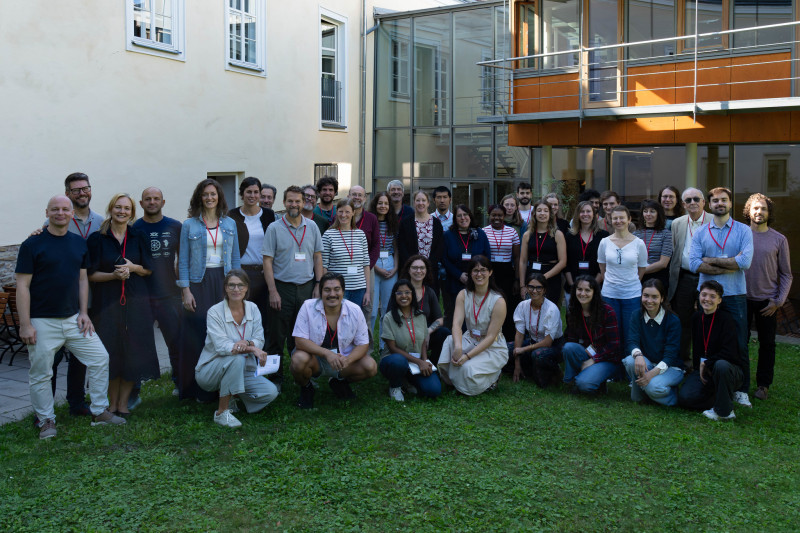News Details

The 44th Altenberg Workshop in Theoretical Biology on “Measuring Development and Evolution of Form” was held at the KLI from September 16 to 19, 2025, and was organized by Philipp Gunz (Max Planck Institute for Evolutionary Anthropology, Leipzig), Philipp Mitteröcker (University of Vienna and KLI), and Katrin Schäfer (University of Vienna). The workshop brought together experts in morphometrics, evolutionary biology, anthropology, and related fields to discuss conceptual and methodological advances in measuring biological form, as well as its developmental and evolutionary dynamics.
The workshop opened with evening lectures by Günter Wagner on the conceptual foundations of homology and meaningful biological measurement, and by Gerd B. Müller on the concept of novelty in biological systems. The talks were followed by a welcome reception and buffet, making the evening the perfect start to the upcoming workshop days, filled with inspiring interactions and conversations.
The first full day featured a series of presentations that surveyed the state of the art in morphometric theory and applications. F. James Rohlf offered perspectives on the history and current state of morphometrics, while Benedikt Hallgrímsson addressed the challenges of attributing causal explanations to phenotypic variation. Talks by Aida Gómez-Robles and Marta Gómez Recio demonstrated how geometric morphometrics can be applied to study brain development and even breathing motion, and Neus Martínez-Abadías showcased the integration of shape, genetic, and clinical data in the identification of multimodal biomarkers for disease diagnosis.
The afternoon session shifted focus to methodological innovation. Dean Adams and Michael Collyer presented new statistical approaches for evaluating modularity and integration and for modeling high-dimensional shape data, respectively. Philipp Mitteröcker closed the session with a conceptual reflection on the meaning and implications of measurement error in biology. These talks set the stage for an interactive poster session, during which participants presented their projects in a newly developed format: short elevator pitches, in which participants were encouraged to share their current research problems. Lively discussions at the posters followed the open sharing of challenges.
The second day of the workshop was devoted to collaborative thematic working groups. Participants organized themselves into three groups dealing with the following topics: 1) Analyses of trajectories in evolution, development, and motion, 2) Multiscale multimodal integration—genotype–phenotype interaction, and 3) Limits of morphometric variation—deformation-based methods, novelty. A highlight was Fred L. Bookstein joining online and sharing his recent ideas and developments on hyperbolic spaces for morphometrics. The day ended with a session in which the respective developers demonstrated and discussed state-of-the-art morphometric software.
On the final day, the working groups reported on their progress, sparking discussions on future collaboration and potential joint publications. The workshop concluded with an excursion to the Natural History Museum in Vienna for a “behind-the-scenes” tour, followed by a farewell dinner in the city.
Overall, the 44th Altenberg Workshop offered an exceptional opportunity to connect developers of morphometric methods with researchers from a diverse range of disciplines. By combining conceptual reflection, methodological innovation, and hands-on collaboration, the workshop successfully advanced a shared agenda for measuring the development and evolution of form.

